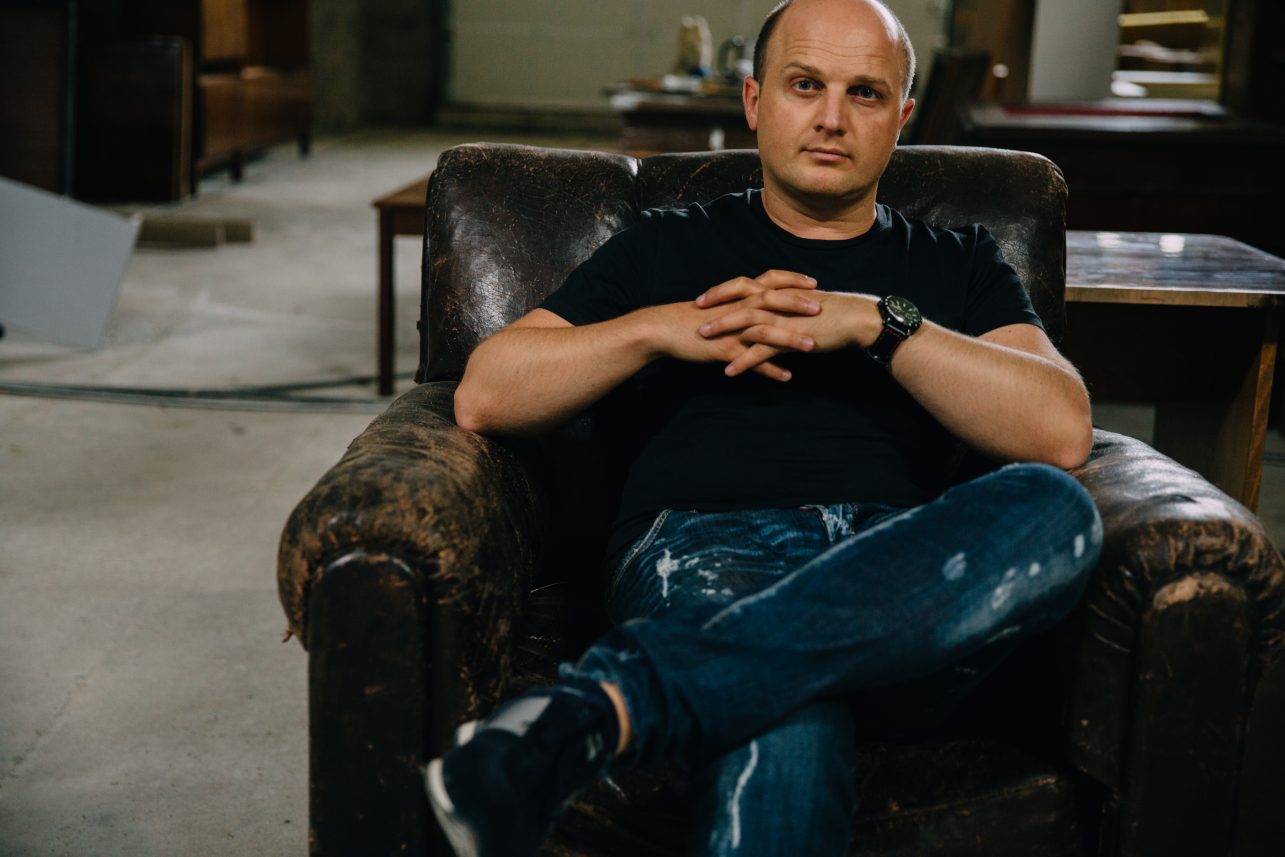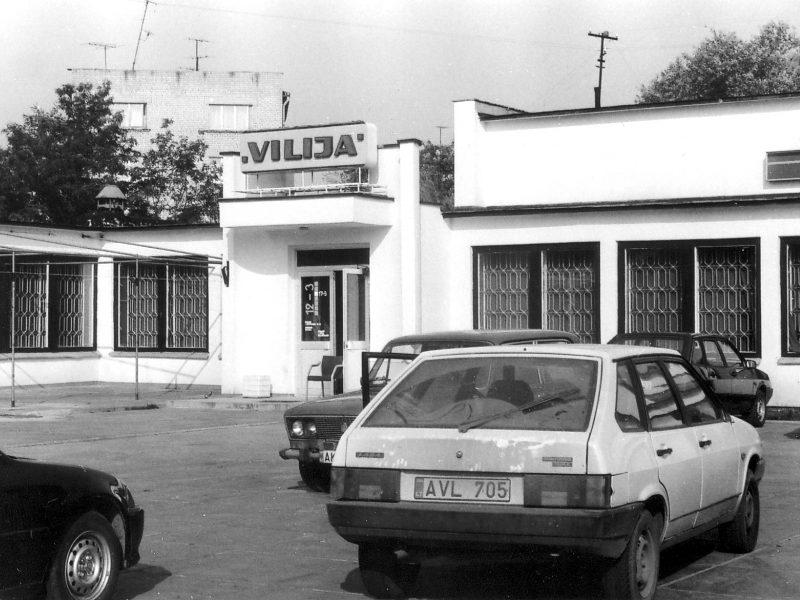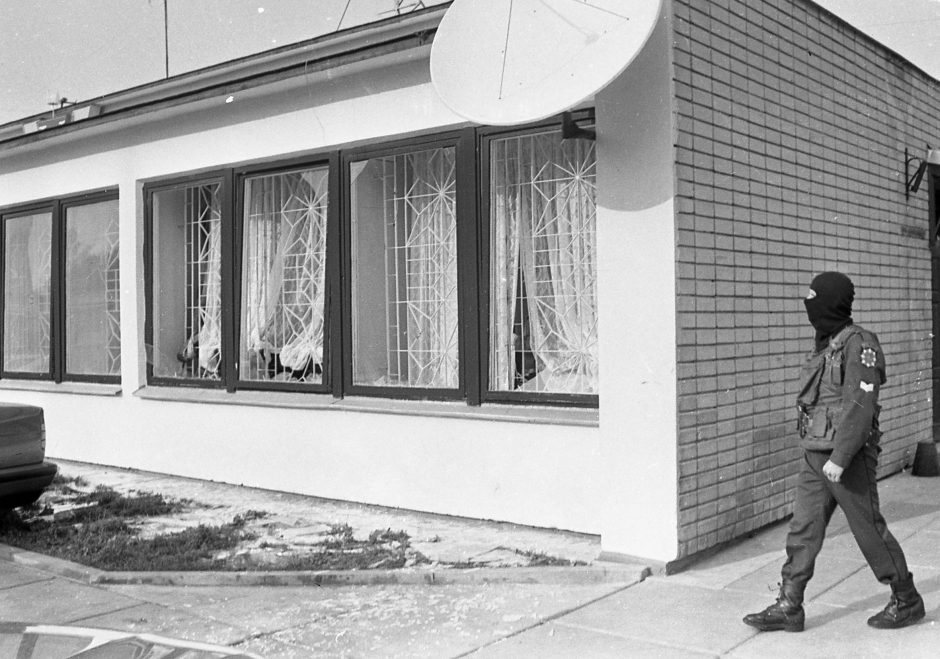“I thought that a lot of people read romance novels in the summer, so I decided to republish my most romantic book,” journalist Dailius Dargis laughs. He means Juodosios mafijos našlės (The Black Widows of Mafia), a book that explains what kind of women choose to be with the bad guys and why; their reasons for marrying criminals, and what comes of such unions. Dailius, who grew up in one of Kaunas microdistricts during the colorful nineties, is very popular with readers, viewers, and internet users interested in crime. His respondents include law enforcement representatives and people from the criminal world.

Dailius, how come Kaunas is at the center of your and other people’s – who write about the criminal world – texts? You are from Kaunas, you started your career as a journalist here, but why does our city have this image?
That image is not new. Both during the years of the Soviet occupation and during the interwar period when Kaunas was the capital, it was said and written in the press that the criminals here were cleverer and the crimes much smarter than elsewhere in Lithuania or in Vilnius, which was occupied by the Poles at that time. Not much material has survived, but the stories are still told. Why? Well, there have always been people in Kaunas who wanted to get rich here and now, to live profitably. After all, even after the 1990s Gariūnai market was full of people from Kaunas. The people of Kaunas were known for selling cars and other types of profiteering. The city was not only famous for Žalgiris but also for less beautiful stories. In my opinion, the reasons were mostly economic. After all, you don’t rob, break in, or attack for fun. You do it primarily because you want to live better.
And if we look closer, why are some parts of the city “darker” than others?
Again, we can look at it historically. There were many factories in Vilijampole and Šančiai, where during the Soviet times it was possible to organize something shady, smuggle something out, and sell it… These are working-class districts, people’s salaries were low, and they wanted to supplement their income, even if illegally. And that sly atmosphere also attracted the so-called criminal elite. More serious criminals wanted to strangle those factory profiteers; racketeering began. This was the environment in which the youngsters, who later became known across Lithuania, grew up. In Kaunas, like in Martin Scorsese’s film Gangs of New York, struggles for influence and survival took place as well. A good feature film could be made about Vilijampolė. All kinds of daktaras and mongolas types emerged in that district due to poverty and violence. Henrikas Daktaras once said that he only saw evil where he grew up. (In a few years, a film about this topic, currently in the making by Lithuanian American Tomas Vengris, will reach the cinema screens., ed.)

Recently, the case of Kaunas’ džerkiniai has reached the court. They were already working internationally; we are talking about literal tons of drugs. About ten years ago, the leader of the gang, Džeraldas Paulauskas bought an apartment in a newly built house in the same Vilijampolė where he grew up and reached adulthood.
The intricate street network probably also affects the action taking place in it.
Well, yes, there are all kinds of legends saying that traces of crimes can lead to well-known objects in the aforementioned Vilijampolė. There’s a stereotype that the search for the missing people is primarily conducted in the forest, however, experienced criminals often work in an environment they are familiar with.


Are there many such loose ends?
First of all, it is Rimantas Ganusauskas otherwise known as Mongolas, who disappeared without a trace in 1993 and was declared dead in 1999. Vladimiras Seneckis-Turistas was also not found. Or, for example, in 2009, one of the members of Kamuoliniai gang from Šančiai, nicknamed Varlė, disappeared. He came to a meeting, parked his Mercedes, dropped the phone, and disappeared. Without a trace, a complete mystery.
Going back to the case of Mongolas, one former member of Daktarai gang said that he was at that execution in 1993, during Christmas, and showed where approximately the body was buried. But that forest near Lapės has been combed so many times, tens of thousands have been spent on the search, and so far, nothing has been found. Daktaras himself says that Mongolas is in South America somewhere, but I think these are tactical things, after all, it is favorable for him to create the image that no one died here. I would guess that this person is no longer alive.
Another interesting case happened quite a long time ago, during the occupation, around the 1980s. At the end of July, one famous police officer, a criminalist, left his mother’s home in Southern Lithuania, walked through the forest, to get to work and, well, vanished. He never showed up at work. He was found in the Nemunas River near Alytus with a bullet in his head. All the documents and personal belongings were with him. Quite a thriller, huh? I think this was perhaps the first time in Lithuania, albeit Soviet, when a person who had accumulated important information about gangs – I mean Daktarai gang specifically – was taken out. I have prepared publications and video materials about it. The versions of the people involved in this case vary greatly. Some said it might have been an accidental crime, with poachers shooting around. But I think it’s a masterful crime. Back then, the opportunities to commit crimes were greater, because technological progress was still far away. Only, I think, that work was carried out by cold-blooded people, after all, the police officer had to be killed, and the murderer risked getting the death penalty. A curious fact: the case is not yet closed, since it is a matter of honor for the officers to catch whoever killed their colleague.
Which pending cases do you find the most interesting?
There is a series on Netflix called Unsolved Mysteries covering truly mysterious cases, missing people who, as it appears, have planned their own departure. It is the perfect series for me. I made some calculations and I think that it would be possible to create one in Lithuania as well.
The person from Kaunas who, it is said, killed two of his garden neighbors, elderly women, left the most disturbing and Twin Peaks-like impression on me. It happened perhaps 10 years ago. He was sentenced to life, but the bodies are still missing. There were all kinds of opinions, for example, that the police are doing a bad job and the like, but I think that the people who tend to commit crimes are simply getting better at it. They are learning from previous crimes, know what mistakes to avoid, and how to cover their tracks professionally.
Do they learn from real cases or movies and television?
As far as I know, these people follow the public space very closely, read crime column articles about serial killers, watch documentaries available on the Internet, and analyse how criminals got into the hands of law enforcement. Generally speaking, they learn from the mistakes of others. I’ve noticed that law enforcement is reluctant to talk about uncovering the mechanism of the crime and, I believe, that’s partly the reason why.
Are you interested in untangling those mistakes?
I think everyone is interested. I wonder why a person stumbles when executing a long-prepared plan. Are they losing their mind or getting too relaxed? Sometimes a mistake is made on purpose when one is tired of crimes or guilt; sometimes a person wants to be caught. But these topics belong to psychologists.
What cases become famous? What excites people the most?
Perhaps the most prominent recent Lithuanian and Kaunas-based example would be Remigijus Morkevičius-Remyga, who was shot in 2016, just before Christmas, in Šilainiai. It is not surprising that it became a well-known case (just after our conversation, it was made public that the investigation into the murder of the famous fighter was completed, the case was transferred to the court, and the murder charges were brought against the hired killer from Estonia, Imre Arakas, ed.).
Morkevičius was famous in the world of sports and participated in various shows. Different scandals accompanied his name because he couldn’t control his aggression – an eccentric and ambiguous personality. I remember that I barely had time to run around the various newsrooms, everyone needed comments and insights on this hot topic. As far as I have heard unofficially, in the last years of his life, Morkevičius was immersed in all kinds of shamanism, apparently, someone foretold him that he would die soon.
You are the author of very popular books. Just in this issue, a colleague investigates which detective stories people buy and which ones they borrow from libraries. What are your statistics?
I have already lost count of how many copies of Tikrosios Daktarų istorijos (The True Stories of Daktarai) have been published; might be over 160 thousand, mostly in Kaunas. In the libraries, Daktarai is in the 6th place only, the first place is held by Vilniaus bomberio išpažintis (Confessions of the Vilnius Bomber). But that’s because we donated a lot of copies of this book to libraries all over Lithuania. The bookstores returned them and I wasn’t planning on throwing them away [laughs].
I am sure you have thought about tours based on your books, shows, articles, and places described.
Of course, I have. I think the most interesting places for people would be those where the people who later disappeared were last seen. These are remote places where you can drive without witnesses. My uncle’s summer house is near the place where Mongolas was taken. I spent a lot of time there as a child and remember very well how everything looked like back then, the dense thicket. Not much has changed. So, I think I could prepare a tour on this topic, about one-way trips.
Of course, people are also interested in the so-called pop stuff: who grew up where, where they ate. After all, even now some of the visitors of Jadvyga Daktarienė’s cepelinai restaurant on J. Naujalio Street, come there not just for food but to see the origins of Kaunas criminal world.

